Digital Marketing Tutorial - Digital Marketing Tutorial for Beginners
Introduction
- Marketing of services and products through the use of digital technologies, mainly through the internet, including mobile phones and other digital medium falls under the umbrella of digital marketing.
- Digital Marketing is used to promote our business and create greater awareness about the products and services we offer in popular social media platforms such as Twitter, LinkedIn, Facebook and Google+.
- It is mainly divided into three types Search Engine Marketing (SEM), Social Media Optimization (SMO) and Search Engine Optimization (SEO).
- The important components of digital marketing over the past few years on Email Marketing and Affiliate Marketing.
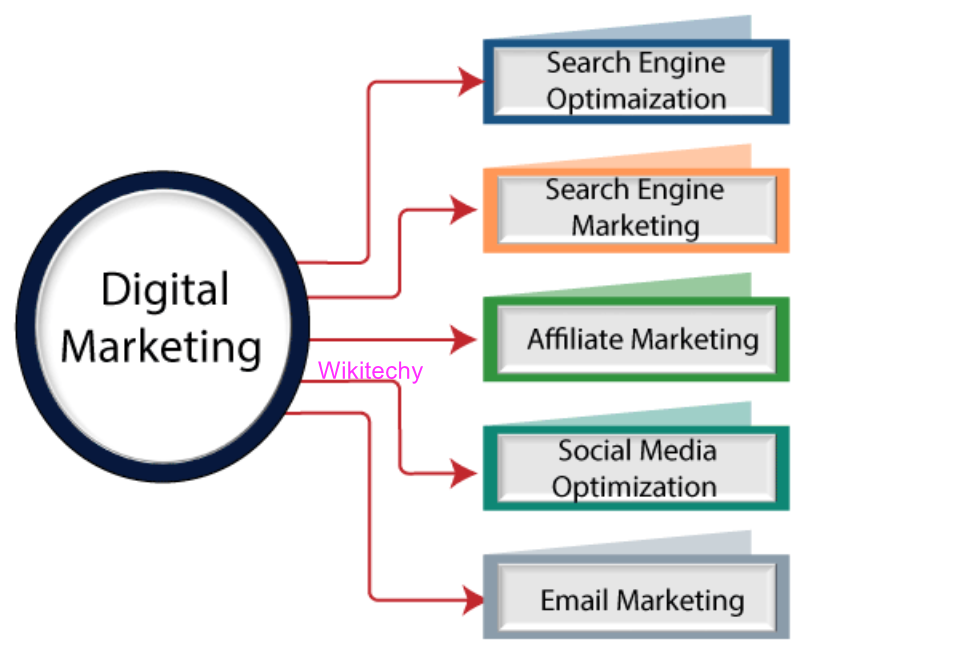
Components of Digital Marketing
Components of Digital Marketing
Search Engine Optimization
- Search Engine Optimization is a process of improving the content and structure of your site and doing promotional activities to increase the traffic, and thus ranking on search engine result pages.
- Search Engine Optimization is further divided into two parts, they are On-Page SEO and Off-Page SEO.
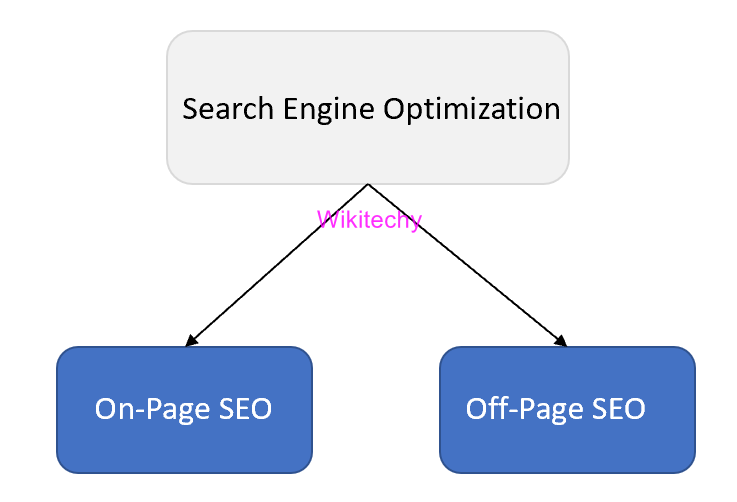
Types of SEO
On-Page SEO
- At search engine result pages, it refers to all the measures or methods used by website owners within their websites to increase the traffic and ranking of a website.
- Within the website means you deal with such elements of SEO that are in your control, such as content quality, meta tags, technical tags, etc. So, there should not be any delay in resolving on page SEO issues to improve and maintain the ranking.
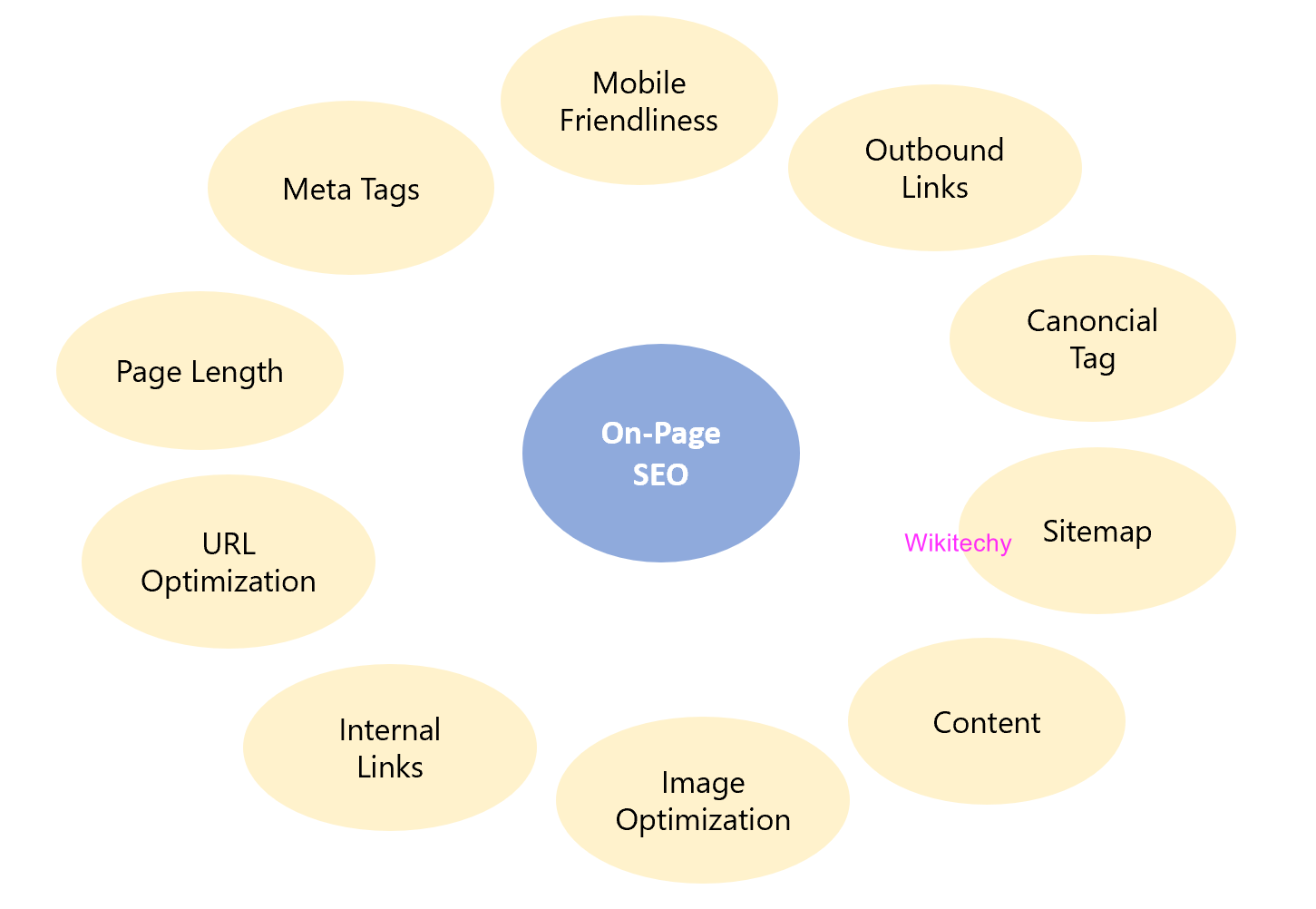
On-Page SEO
Meta Tags
- Meta Tags are HTML tags that provides information about the content of a webpage.
- It describes what the page is about when it was updated, and who has created it.
- In terms of SEO this information is very important as it helps search engine crawlers understand and index the page.
- Meta tags consists of three types Meta Title, Meta Description Tag, Meta Keywords Tag.
- Meta Title is the title tag which is also your page title and appears on the title bar of the browser window in search engine result pages.
- Meta Description Tag is the summary of the information contained in your page and displayed below the URL of your page when your URL appears on the search engine result pages in response to the search query made by a user.
- Meta Keywords Tag contains all of our key keywords related to the content of your page.
Page Length
- The search engine prefers long pages to rank higher than short pages.
- Page length knows that users do not get satisfied with basic information. Instead, they expect a full explanation.
Outbound Links
- We can give links of other sites on our page that provide similar information and it may act as a trust factor for Google.
Internal Links
- Interlinks are use to convert popular pages to new pages so that traffic from one page may be diverted to other pages.
Canoncial Tag
- Canoncial tag is used to prevent the duplicate issues that arise when you have two URLs with similar content.
Image Optimization
- Using alt text, description, etc. image is required to be optimized.
Sitemap
- It is created for site and helps search engines in indexing pages of our sites.
Content
- The content of your pages should be latest, relevant, unique and should be related to highly searched topics, keywords, etc.
URL Optimization
- It keeps your URL less than 255 characters, and use hyphens '-' to separate different parts of the URL. Additionally, it should be short, descriptive, and contain your main keywords.
Mobile Friendliness
- In google around 60% searches are made through mobile phones and other such devices. So, it makes sure our website is mobile-friendly.
Off-Page SEO
- It is different from On-page optimization, although Off-page optimization has the same objective of increasing traffic.
- In Off-page SEO, the measures are taken outside the site, which is not in the control of a website owner such as blog submission, article submission, forum posting, etc. but in On-Page SEO, we deal with the factors that are in our control, i.e., within the website.
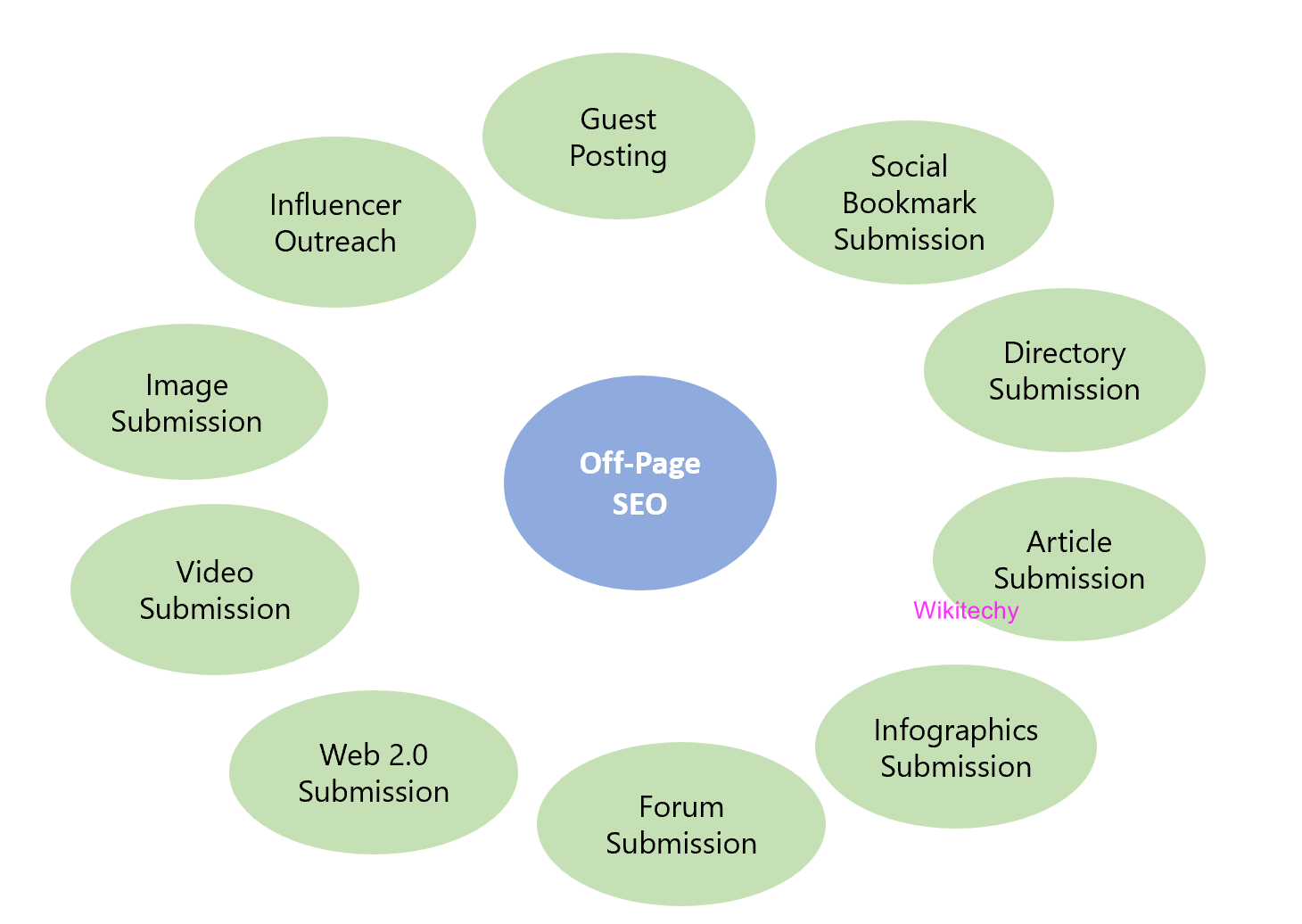
Off-Page SEO
Influencer Outreach
- If our content is relevant, latest and unique, we should share it with influencers in our industry.
Guest Posting
- There are many blogs or authors that allow us to submit our content or post as a guest post on their sites.
- If we have written quality content, we can post it there to get backlinks from them.
Social Bookmark Submission
- There are many social bookmark submission sites where we can upload our blog post or webpage containing a link to our site to drive traffic to our site.
Forum Submission
- In this method, we participate in forums related to our business, websites.
- Here we provide feedback, answer questions, queries, and reply to threads and suggestions, for better results use, "Do-Follow" forums.
Directory Submission
- We can submit our pages in directories to build backlinks so, we should choose relevant categories and directories.
Article Submission
- There are also many article submission sites where we can submit articles, again choose relevant categories to submit articles.
Video Submission
- We can create videos with proper description, title, tags, reference links and submit them to video submission sites to get backlinks.
Image Submission
- In various image submission we can share our images.
- We don’t forget to optimize our images with the relevant URL, description, alt tag, title tag, etc.
Infographics Submission
- Infographic is a visual representation of data or information such as charts, graphs, etc.
- We can submit it to infographic submission sites with links to our website.
Web2.0 Submission
- This off page SEO technique allows us to create a subdomain in high domain authority websites, such as WordPress, blogger, medium and more.
Social Media Optimizations (SMO):
- In Social Media Optimization, we increase traffic, and ranking of sites through social media sites such as Facebook, LinkedIn, Pinterest and Twitter.
- These sites build a social network and offer an online platform to interact with other people throughout the world.
- Each of the social media sites has different features and offers us lots of ways to drive traffic to our website and promote our services and business.

Social Media Optimization
- Facebook is an online social media platform which was created by Mark Zuckerberg in 2004.
- It offers us an online platform to invite and connect with other people, which can be our family members, friends, colleagues, etc.
- Facebook kept developing over the years to offer users new features to share and interact.
- Facebook marketing is a new form allows us to promote our product, services, business, etc.
- Twitter is another online media platform which is a micro-blogging tool that allows users to read, write, and share messages that are up to 140 characters long.
- Twitter was created by Jack Dorsey in 2006 and it has become a popular social media site with a huge user base.
- Twitter marketing refers to using twitter to advertise or promote our product, drive traffic, business, services to our website.
- Twitter features that can be used for marketing are Images and Videos, Hashtags, Twitter Chat, Twitter Alert, Twitter Analytics and Twitter Moments.
LinkedIn Marketing
- LinkedIn is a professional networking site that allows us to build a professional network and interact with professionals.
- We can share our profession or job-related ideas, industry news and requirements like job openings.
- Nowadays, it promotes brands, businesses, products which is known as LinkedIn marketing.
- Linkedln features that can be used for marketing are Ad Campaign on Linkedln and Linkedln Group.
- Pinterest is a social media network that acts as a virtual online pinboard which allows us to create your own virtual online boards, where we can pin images, videos, and share them with other users.
- Without using an image or video, the users interact through visuals, they can't share ideas, thoughts, etc.
- When we post visuals like images or videos to our own or other, it is called pinning on Pinterest.
- Pinterest features for marketing are Pinterest Board.
Search Engine Marketing
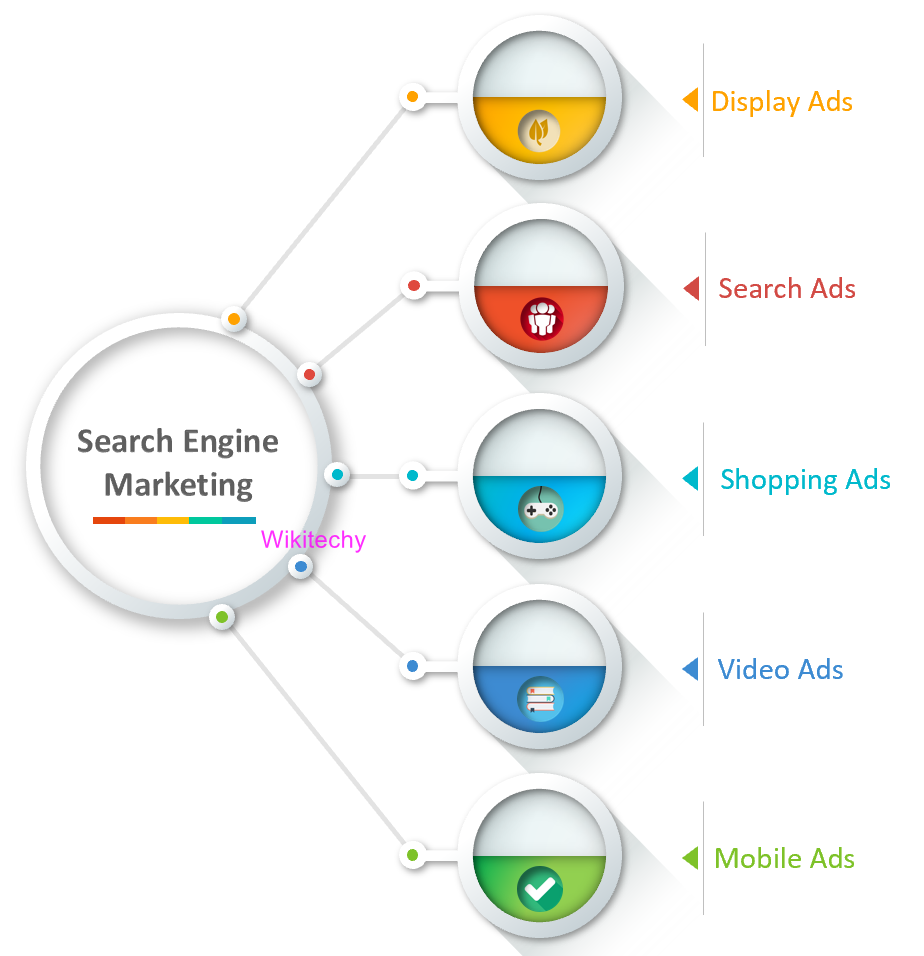
Search Engine Marketing
- Search Engine Marketing is a digital marketing strategy that is different from SEO and SMO, as here we have to pay the search engines like Google for the marketing of your products and services on Search Engine Result Pages.
- There we pay more, there is the chance of our ads to appear on the top of the search engine listings.
- In search engine it is the practice of marketing a business through paid advertisements such as Pay per Click ads (PPC) that appear at result pages above the organic results.
- In Search Engine Optimization we don’t pay Google for clicks and traffic rather, we get a free slot in the search results based on the quality and relevancy of our content for a given keyword search.
- Search Engine Marketing is also known by many names based on the Search Engine you are using for marketing. For example, Google ads.
Points to remember before creating a PPC campaign are as follows
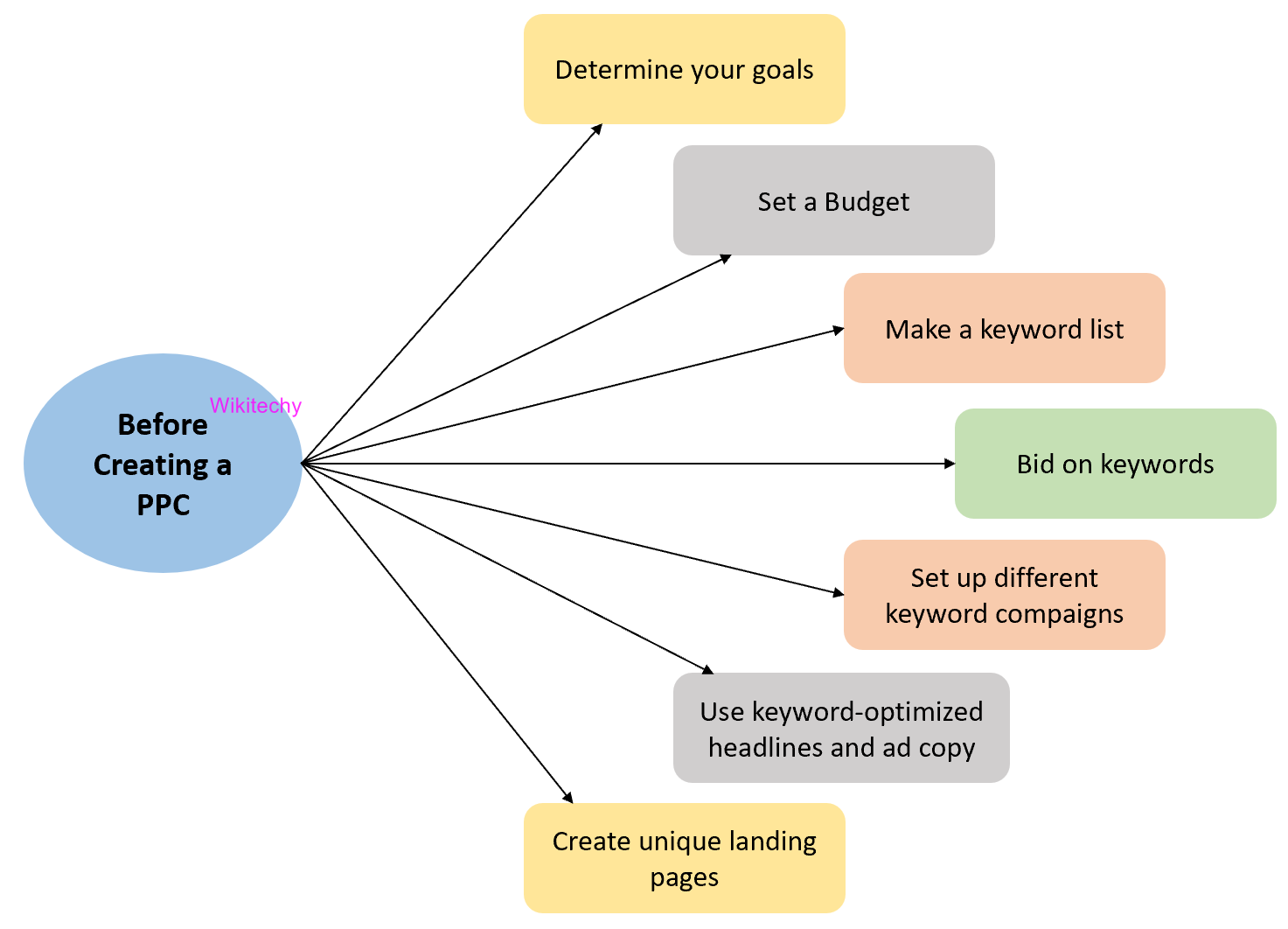
PPC campaign
Determine your goals
- It decides whether we want to increase inquiries or subscribers, to increase sales, drive traffic to our site, etc.
Set a budget
- It decides how much we can invest in starting a campaign.
- We can run a small campaign with a small investment to test the market and its functioning.
Make a keyword list
- Pick the right keywords that are relevant to our target market, and we can use Google AdWords Keyword Planner for our budget.
Bid on keywords
- If we have a sufficient budget, we can bid more than our competitors for a keyword and it is like an auction where we bid on chosen keywords.
- If we do so, our ad will appear higher on search engine result pages than our competitors for that keyword.
Set up different keyword compaigns
- If we have different services and products, we may create separate campaigns to make more profits.
Use keyword-optimized headlines and ad copy
- Users use keywords as search terms while searching for services and products that you sell.
Create Unique landing pages
- A landing page is a page that a customer lands on after clicking on our PPC ad.
- Avoid sending users to our homepage, instead send them to unique landing pages that contain the relevant information and keywords as searched by the users.
Email Marketing
- Email marketing is also one of the most profitable means of marketing, like Social Media Optimization, Pay Per Click, etc.
- Usually potential customers using email, it refers to sending a commercial message to a group of people.
- In simple words, it is the use of emails for promoting services or products as well as developing and maintaining relationships with the clients.
Common goals of an Email Marketing
- To increase new signups for our services and products.
- To get donations for our case and It generates new leads for the sales department.
- To attend the event, to reach maximum attendees for our event.
Email Marketing Tools
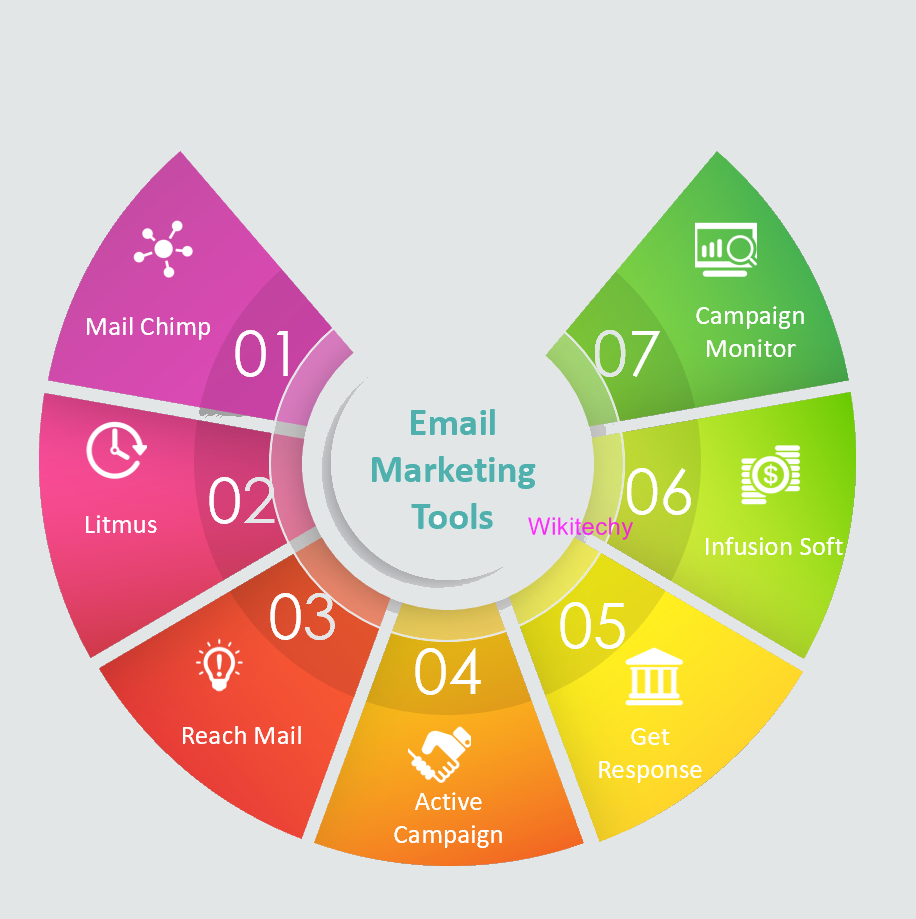
Email Marketing Tools
Affiliate Marketing
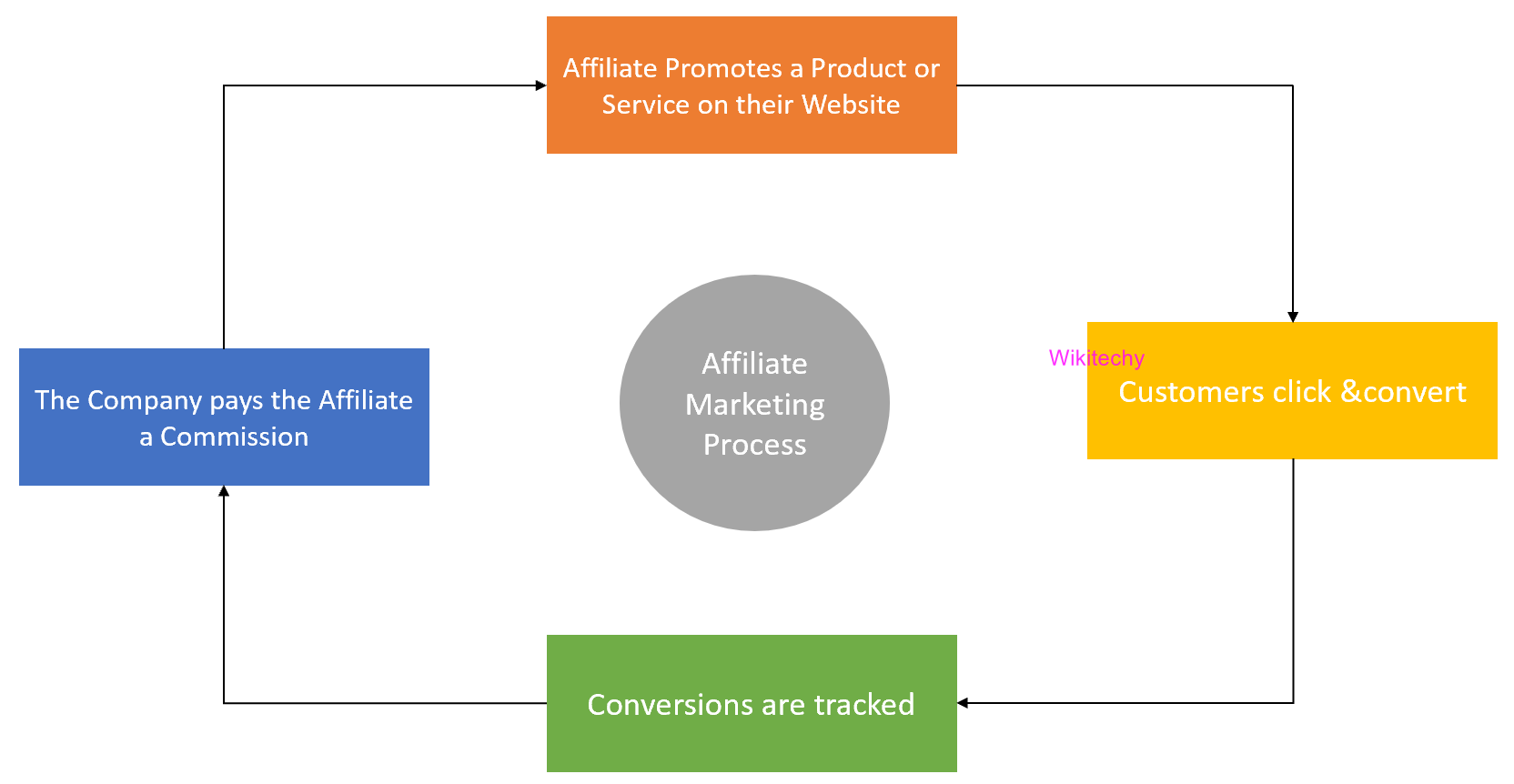
Affiliate Marketing
- It is a type of digital marketing in which an affiliate earns a commission for services of a company or marketing the products or a seller etc.
- It gets part of the profit from each sale and so, the company compensates the third-party publishers, the affiliates to generate traffic to company services and products.
- It is a relationship between three parties which are Consumer, Advertiser, Publisher.
- Affiliate marketers have reputable promotes to promote and join affiliate programs that relate to their websites or blogs.
- When a product is purchased, the affiliate shares these products with their audiences and earns a commission.
- For promoting the company's product, the affiliate joins the merchant's program and gets a unique ID and a specific URL.
